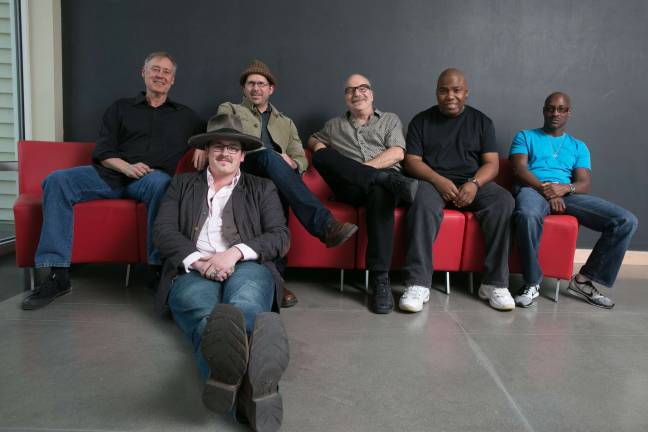Bruce Hornsby bringing Noisemakers to MPAC

MORRISTOWN — Bruce Hornsby and The Noisemakers come to Mayo Performing Arts Center on Thursday, Sept. 1, at 8 p.m.
Tickets are $39-$69.
One of music's most diverse performers, Bruce Hornsby makes joyful noise as he discovers clever and expansive ways to chronicle the dynamic musical snapshots of his journey. Hornsby and his longtime band The Noisemakers perform from this diverse catalog, from classic hits like "Mandolin Rain" and "The Valley Road" to their recent American Roots-flavored release Rehab Reunion.
In the mid-1990s, a decade after he showed the world and its airwaves that his soaring musical language included both Steinways and accordions, Bruce Hornsby took his family to the Annual Old Fiddlers' Convention in Galax, a town in the Appalachian southwest of Hornsby's native Virginia that has hosted the event since 1935.
In the Galax parking lot full of campers and RVs, which he calls the site of "one big bluegrass pickin' party," Hornsby's wife emerged unconverted but his preschoolers went happily wide-eyed and Hornsby himself bought a dulcimer. The seller in the booth at the Festival couldn't hand Hornsby one to take home, but it soon arrived in the mail, this uncomplicated instrument with the "big rich ringing tone" that won over his ears, shipped from a company called Goose Acres in Cleveland.
A couple of decades later, that Galax purchase has yielded Rehab Reunion, Hornsby's piano-free new album that features guest appearances by Bon Iver's Justin Vernon as well as the magisterial soul-gospel singer Mavis Staples. Recorded in Williamsburg with The Noisemakers, produced by Hornsby, it's a trenchantly sung ten-song collection that spins into intricate dramatic scenes mundane things like skipping town ("M.I.A. in M.I.A.M.I."), calculating gratuities at restaurants ("Tipping"), and airport security as sensual experience ("TSA Man"). But it also captures rarer stretches of life that seek or attain transcendence.
For Hornsby, the dulcimer provided a counterpoint to the work he'd been doing on his principal instrument, where he is one of the most accomplished players in international music. The dulcimer proved to be a kind of reverse cure.
"In my piano writing," Hornsby said. "I've gotten really bored with triads. I've been that way for years. My piano writing has become more strange, chromatic and dissonant. But on the dulcimer I love the limited palette that you're allowed to paint with. It's just the white notes — it's not even like a guitar, where the whole chromatic scale is on the fret board. On the dulcimer, it's just an old-timey instrument. It's just scalar. So it limits your range and it makes you write real simple songs. I kept writing more and more. And all of a sudden the record needed to be made."
"I've tried to find my own way with this," Hornsby says. "I know all the language of the ninths and the elevenths and so forth. But I tend to be moved to my core more by the most elemental gutbucket old-time music, whether it's Rev. Gary Davis or Bill Monroe or shape-note singing, sacred heart music, the Shaker hymns. That stuff gets under my skin probably on a deeper level than some of the more advanced music I like. It's all about what gives me chills."
Rehab Reunion departs from most singer-songwriter sounds.
"Most singer-songwriters," Hornsby says, "are guitar players fond of big ringing chords. With the dulcimer it's all just root/fifth/root. I'm playing thirds on some melody lines but it's way more modal, way more simple, earthy and elemental. It makes the sound less like singer-songwriter sound. It's pretty because it's acoustic music, but the primitive nature of the genesis of the music gives things a different feeling."
It's a tremendous vibe from the uncomplicated yet resourceful heart of one, as Hornsby tends to refer to it, little dulcimer.